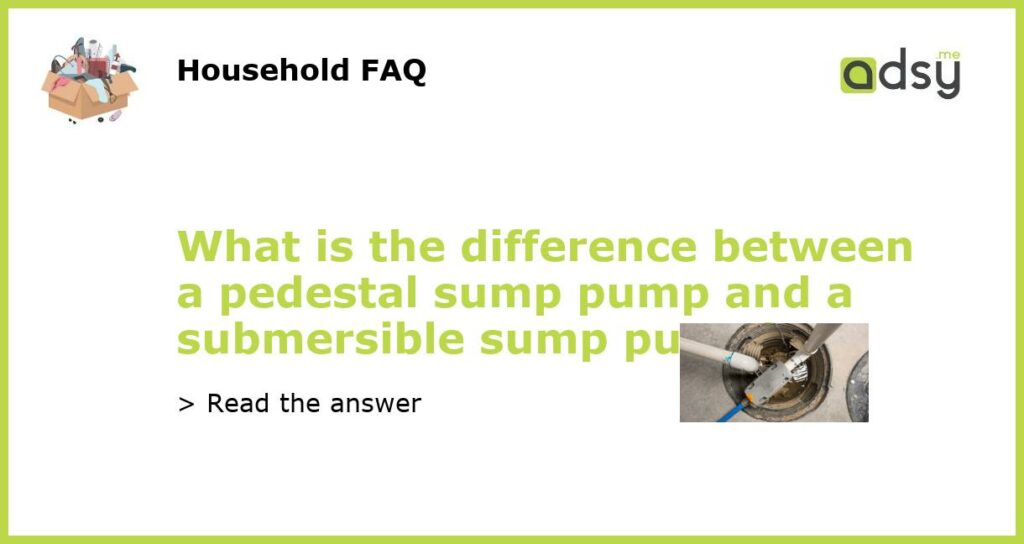Pedestal Sump Pump vs. Submersible Sump Pump: Understanding the Key Differences
If you are in the market for a sump pump, you have likely come across two popular options: the pedestal sump pump and the submersible sump pump. Both serve the same purpose – to prevent flooding and water damage in your basement – but they differ in their design, installation method, and functionality. In this article, we will explore the key differences between these two types of sump pumps to help you make an informed decision for your specific needs.
Design and Installation
The primary difference between a pedestal sump pump and a submersible sump pump lies in their design and installation method. A pedestal sump pump consists of two main components: a motor that is mounted on top of a pedestal, and a pipe that connects the pump to the sump pit. The pump is positioned above the sump pit, which means that the motor remains out of the water at all times. This design makes it easy to access and repair the pump if necessary.
On the other hand, a submersible sump pump is designed to be completely submerged in the sump pit. The entire pump, including the motor, is sealed within a waterproof casing. This design allows the pump to draw water from all sides, which enhances its efficiency. The installation of a submersible sump pump involves placing it directly into the sump pit and connecting it to a discharge pipe.
Functionality
Both pedestal and submersible sump pumps are designed to remove water from a sump pit, but they differ in terms of how they accomplish this task. A pedestal sump pump uses an impeller, a device that spins rapidly, to draw water from the sump pit and push it through the discharge pipe. The impeller is driven by a motor located above the sump pit. This design allows for greater pump horsepower and enables the pump to handle large volumes of water.
A submersible sump pump, on the other hand, relies on a different mechanism to remove water. It uses a motor that is directly integrated into the pump housing. When water enters the sump pit, the pump activates and starts pumping water out of the pit. This design allows for quieter operation since the motor is submerged in water, which acts as a natural noise dampener.
Advantages and Disadvantages
Each type of sump pump has its own set of advantages and disadvantages that must be considered before making a decision.
Advantages of a pedestal sump pump include:
- Easier access for maintenance and repairs
- Longer lifespan due to the motor being outside of the water
- Lower initial cost
However, pedestal sump pumps also have some drawbacks, including:
- Noisier operation due to the motor being above the sump pit
- Limited pumping capacity
- Higher chance of overheating since the motor is not submerged
Advantages of a submersible sump pump include:
- Quieter operation due to the motor being submerged
- More powerful and efficient pumping capabilities
- Lower chance of overheating since the motor is submerged in water
However, submersible sump pumps also have some drawbacks, including:
- More expensive initial cost
- Difficulties with access and repairs due to the pump being submerged
- Shorter lifespan due to the motor being in contact with water
Choosing the Right Pump for Your Needs
When deciding between a pedestal sump pump and a submersible sump pump, it is important to consider your specific needs and circumstances. If you have a smaller basement, limited space, or a tight budget, a pedestal sump pump may be the more practical choice. On the other hand, if you require a higher pumping capacity, quieter operation, and are willing to invest in a more durable and efficient system, a submersible sump pump may be the better option.
Ultimately, both pedestal and submersible sump pumps are effective solutions for preventing basement flooding. By weighing the advantages and disadvantages of each type and considering your unique requirements, you can make an informed decision that will ensure the protection of your home and belongings.

